I Dig Sports
Tiger Woods, Justin Thomas, Rory McIlroy, Justin Rose in Payne's Valley Cup

Tiger Woods and Justin Thomas (Team USA) will compete against Rory McIlroy and Justin Rose (Team Europe) in an event to celebrate the opening of Woods' first public course design.
The Payne's Valley Cup takes place Sept. 22 and will be broadcast on Golf Channel, beginning at 3 p.m. ET. The Payne’s Valley Golf Course at Big Cedar Lodge in Ridgedale, Missouri, is the host site. It is named in honor of Ozarks native Payne Stewart.
“Payne’s Valley is the first public golf course that I have designed. I couldn’t be prouder of how it turned out,” Woods said. “It was an honor for me and my TGR Design team to work with Johnny Morris and Big Cedar Lodge on this spectacular golf course. I am thrilled that it will be featured during the Payne’s Valley Cup.”
The two teams will compete in a match-play format, with a mix of fourball, foursomes and singles, over 18 holes.
Woods' TGR Design company has built a handful of course, including Bluejack National near Houston and El Cardonal at Diamante in Cabo San Lucas, Mexico. Payne's Valley is his first course open to the public.
Suarez's Italy citizenship test under investigation

Luis Suarez's Italian citizenship exam is under investigation from prosecutors amid irregularities, it was announced on Tuesday.
The Barcelona forward, who himself is not under investigation, underwent a citizenship test at the University For Foreigners in Perugia on Sept. 17.
During an investigation into wrongdoing at the university, irregularities with Suarez's test emerged.
A statement from the Perugia Prosecutor's office said it appears information about the test was given to the candidate before the exam, while a final result was attributed before completion.
"During the investigation undertaken by the Perugia financial police core into various and accrued issues with regards to the Perugia University for Foreigners, which been ongoing since February 2020, irregularities in the Italian language certificate test under taken on this Sept. 17 by Uruguayan footballer Luis Alberto SUAREZ DIAZ, necessary to obtain Italian citizenship, have emerged," the statement by Perugia prosecuted Raffaele Cantone read.
"From the activities investigated, it has showed that the topics covered in the test were previously agreed and that the relevant score was agreed before the test had taken place, despite, during the course of the lessons taken a distance by university professors, finding a basic understanding of the Italian language.
"Today, members of the financial police are acquiring university office documents for further information on the above described as well as warrant for information of false certification offences committed by the public official in public acts and other."
Suarez had been told to look for a new club this summer after Barcelona appointed Ronald Koeman as their new manager.
Sources told ESPN earlier this that the ex-Liverpool forward had agreed a move to Juventus but required Italian citizenship in order for the transfer to go through due to his non-EU status.
However, the transfer appeared to have broken down before he took exam and Juve boss Andrea Pirlo said two days after that Suarez was unlikely to join the Italian champions.
It since appeared Suarez, 33, was close to joining Atletico Madrid, with Alvaro Morata set to leave the Spanish capital side to join Juve, but sources have told ESPN Barca have backtracked on their agreement to let him move to the Wanda Metropolitano, leaving him furious.
'The pain has settled' and scans are 'encouraging' - R Ashwin on shoulder injury
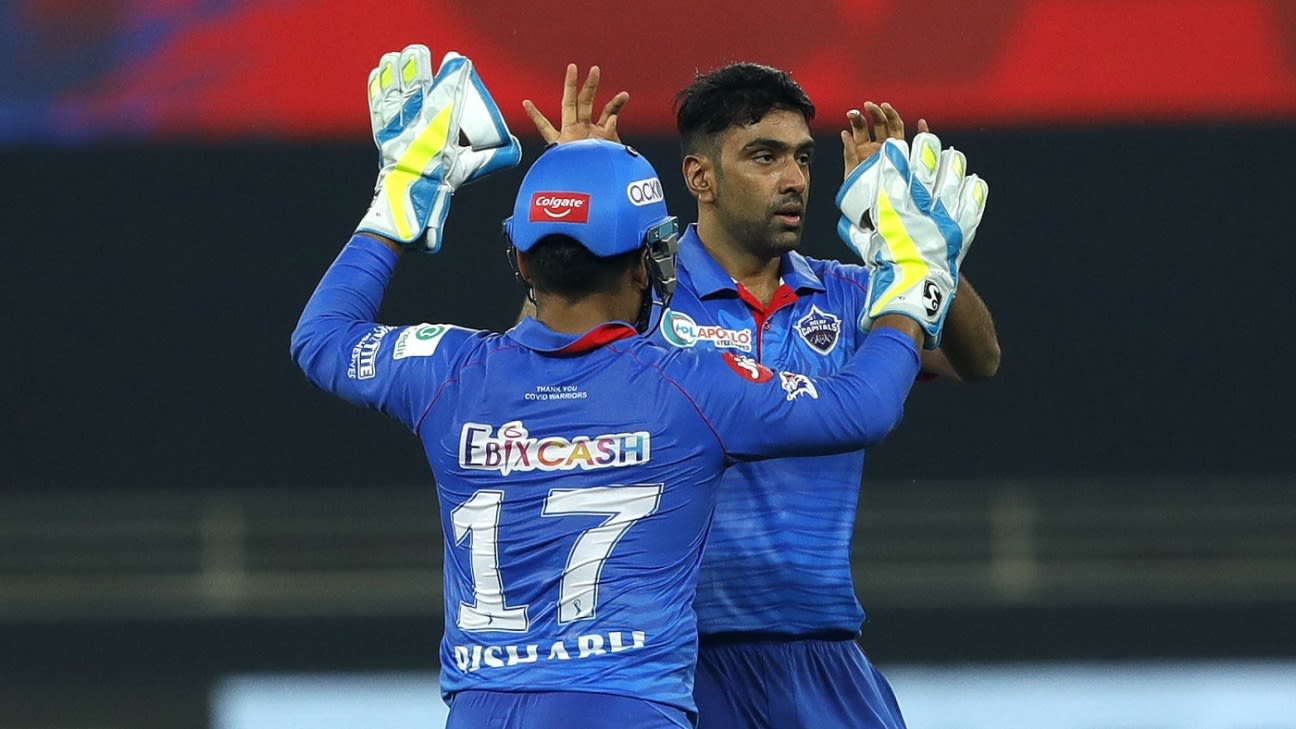
R Ashwin might be back in action for Delhi Capitals sooner than expected after dislocating his left shoulder in his team's IPL 2020 opener against Kings XI Punjab, with his scan reports "encouraging". He also said, on social media, between Monday and Tuesday, that the pain in the injured shoulder has "settled down" and "the stiffness and inflammation around it, I hope, will go away".
The incident took place on the last ball of the sixth over of the Kings XI innings on Sunday, Ashwin's first over of the game, in which he had already sent back Karun Nair and Nicholas Pooran to give the Capitals a distinct edge. Glenn Maxwell, the new man in at the fall of Pooran's wicket, drove the ball, Ashwin dived, and looked in pain straightaway after landing awkwardly. Patrick Farhart, the team physio, reached Ashwin on cue, and the bowler went off with his left arm in a makeshift sling, fashioned from his team jersey.
For him, as Ashwin put it in a video on his YouTube channel on Tuesday, it was "more frustration than pain", the injury coming as it did immediately on his return to action.
ALSO READ: Injurywatch - when will Williamson, Ashwin, Marsh return?
"My shoulder bone popped after I fell, so I was in a lot of pain. But the beauty of it was our physio and team doctor made me lie down and clicked my shoulder and popped it back into the ball socket," Ashwin said. "During the last six months, I was bowling at home, and I know I was looking forward to the tournament. When I fell, I felt more frustration than pain. Maybe because of that you would have seen those emotions on my face."
The scan, which Ashwin was encouraged by, was conducted on Tuesday morning. "I had a scan this morning. Usually when the ball pops out of the socket, there can be a tear or damage. But the ball popped back into its place since my shoulder and elbows are hyper-mobile, so the stiffness and inflammation around it, I hope, will go away."
The Capitals won that game after it ended in a tie and Kagiso Rabada bowled a Super Over to remember, and Shreyas Iyer, their captain, sounded a positive note on Ashwin after the game. "I briefly spoke to Ashwin, and Ashwin said he'll be ready for the next game, but at the end of the day it's the physio's decision. He [Ashwin] is a strong-minded guy, and hopefully he'll be available," he told the host broadvaster.
The Capitals' next game is against Chennai Super Kings on September 25 in Dubai.
Chennai Super Kings vs Rajasthan Royals, IPL 2020 - Rolling Report
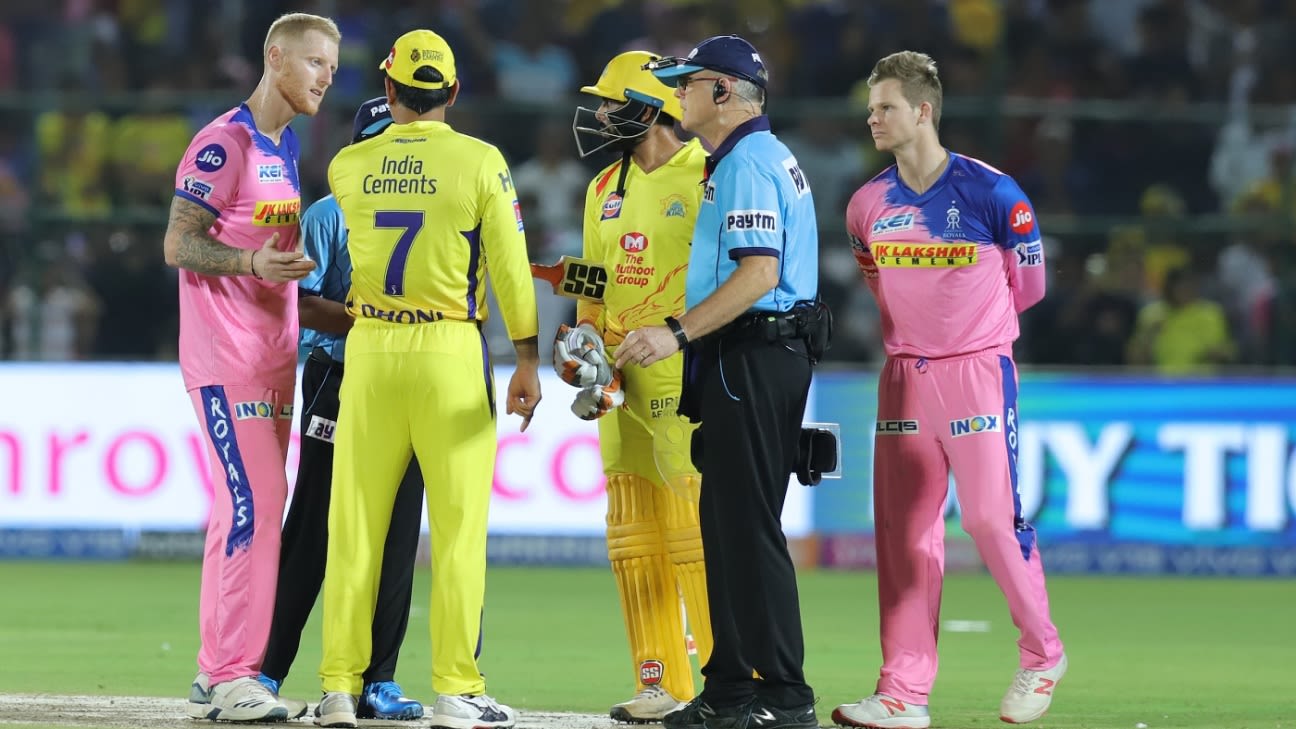
Welcome to ESPNcricinfo's Rolling Report of the fourth IPL 2020 match: Chennai Super Kings vs Rajasthan Royals in Sharjah. On one side, we have the likes of MS Dhoni, Ravindra Jadeja, Ambati Rayudu, Sam Curran, Faf du Plessis and others. On the other, there are Steven Smith, Jofra Archer, David Miller, Sanju Samson, Robin Uthappa, Jaydev Unadkat and others. Stay with us to know how it goes...
If the blog doesn't load for you, please refresh your page or click here.
'I like to take on the big players' - Trent Boult on the Andre Russell challenge
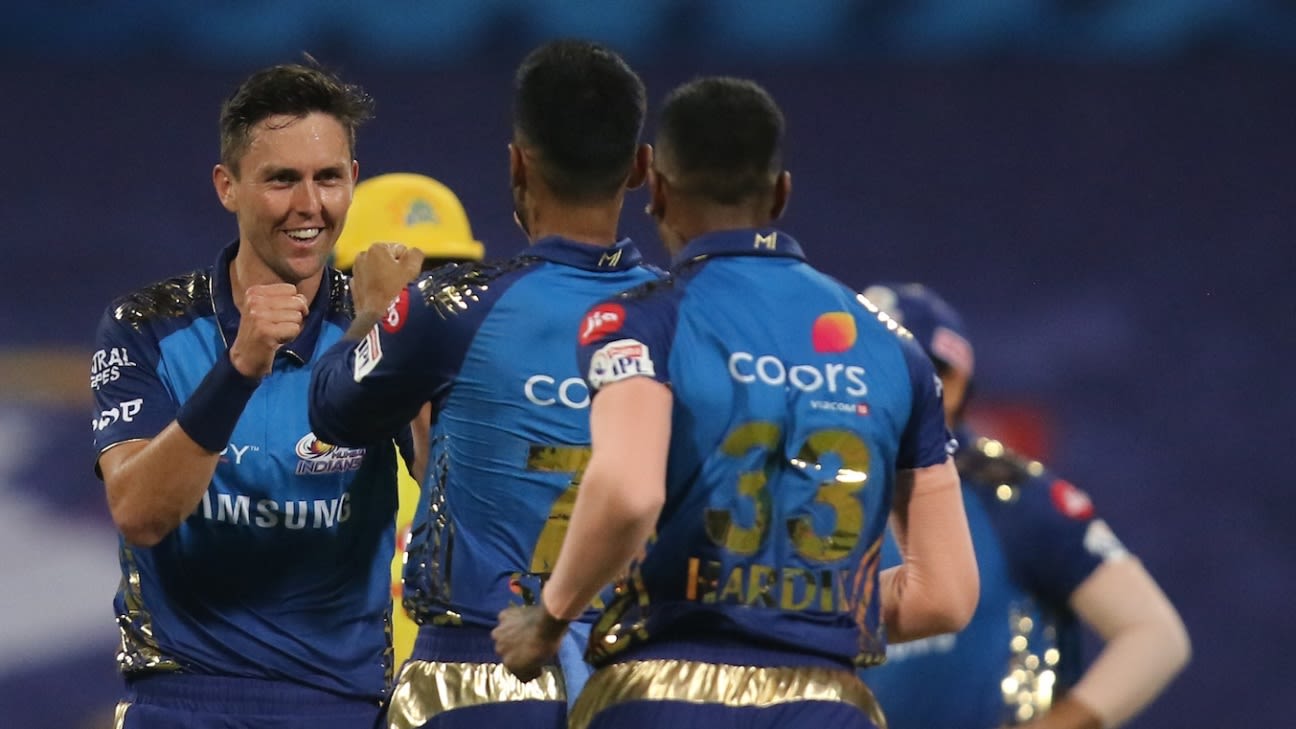
Entrusted with the final over in Mumbai Indians' IPL 2020 opener against Chennai Super Kings in the absence of Lasith Malinga, where he was taken for two fours in two balls by Faf du Plessis to end the match, Trent Boult called bowling in the death overs the "biggest challenge in T20 cricket".
"It's the biggest challenge in the game, to be honest," Boult said of bowling at the death. "It's very difficult to bowl in the last couple of overs when the batsmen are set; du Plessis was set the other night on 50 runs, and when guys are hitting from that platform it's very hard to defend.
"Personally, I want to try and stick to my strengths, try and execute yorkers and take the pace off [the ball], and just try and stay a step ahead of the batsmen. It's definitely the biggest challenge in T20 cricket."
ALSO READ: Chennai Super Kings vs Mumbai Indians - Talking Points
Jasprit Bumrah's poor day out added to Mumbai's concerns against the Super Kings. He leaked 32 runs in his first three overs before bowling the penultimate over, when the Super Kings needed 16 from 12 balls. He dismissed Sam Curran on the second ball but only after being hit for a six on the first ball. By the time the last over started, the Super Kings needed just five runs.
Boult said he expected Bumrah to "bounce back" as he had been "working very hard the last couple of days to find that rhythm".
Mumbai, and Boult, will be up against it again on Wednesday when they take on Kolkata Knight Riders in Abu Dhabi. The Knight Riders are expected to field a power-packed middle order, with the likes of Eoin Morgan and Andre Russell in the mix. Russell is coming offf three half-centuries in the recent CPL and had a strike rate of 249 in the death overs last IPL, including a 40-ball 80 not out against Mumbai at Eden Gardens.
"The wickets are going to change throughout the tournament but from what we experienced the other night, in the humidity the ball definitely swung around a little bit, being early in the tournament and a fresh wicket"
To add to that, Russell has an impressive record against both Bumrah (49 runs off 33 balls, one dismissal) and Boult (17 runs off nine balls, one dismissal) in T20s.
"He (Russell) is one of the most destructive batsmen in the game and therein lies the challenge," Boult accepted. "That's personally why I play the game, I like to take on the big players and look to take wickets, I'll be looking forward to that challenge and I am sure I'll face it at some stage in this tournament."
Boult found some early swing against the Super Kings with an opening spell of 3-0-15-1 but expects the pitches to deteriorate as the tournament goes on.
"I'm presuming the wickets are going to change, not drastically, but they will deteriorate in the next couple of months," he said. "It's pretty hot here, the day games will be interesting with the heat and humidity and how the wicket seems to quicken up little bit under lights.
"The wickets are going to change throughout the tournament but from what we experienced the other night, in the humidity the ball definitely swung around a little bit, being early in the tournament and a fresh wicket. From my point of view, I just want to be on the mark with the ball and take wickets. I'd like to see them as swinging-friendly conditions with a bit of pace in the wicket but the teams are assessing conditions and adjusting as quickly as possible."
IPL 2020: Delhi Capitals' Kagiso Rabada shares the secret behind his Super Over success
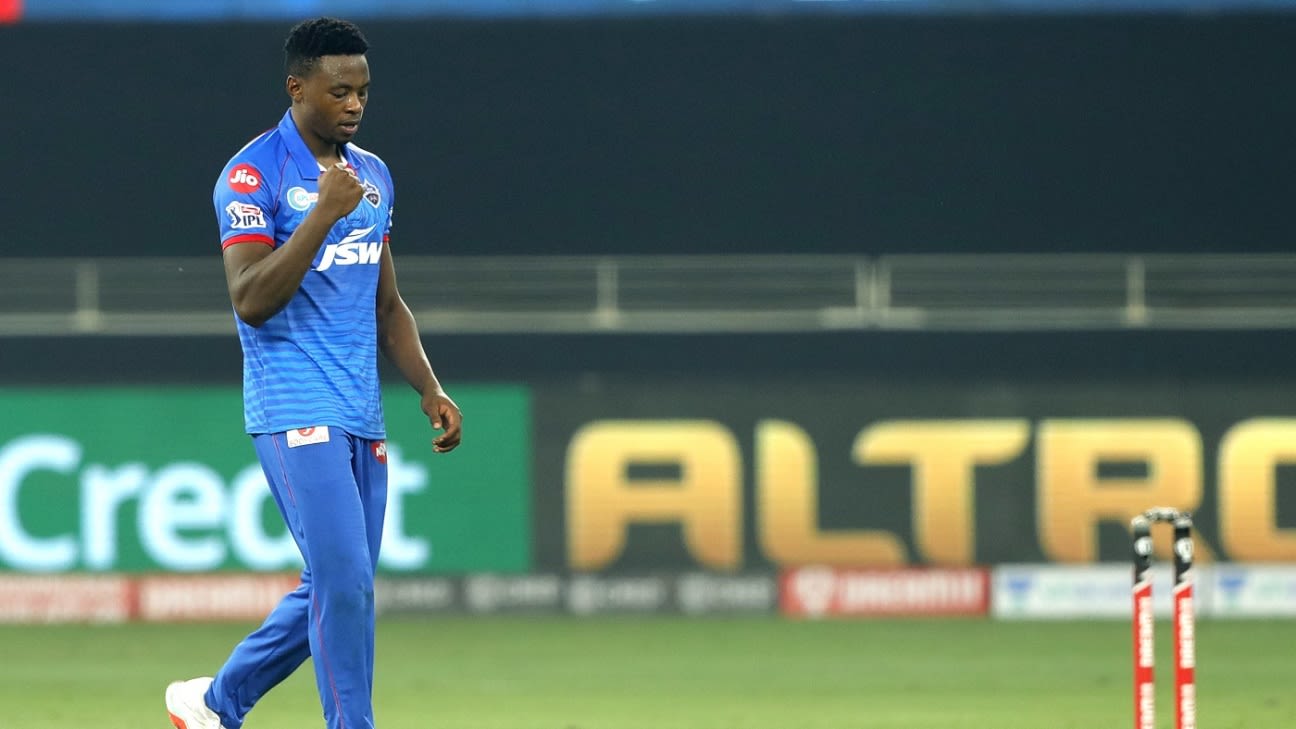
Kagiso Rabada is one of only two bowlers to have bowled two Super Overs in the IPL, alongside Jasprit Bumrah. Not coincidentally, both times they bowled a Super Over, their teams won the match.
Rabada's Super Over record reads: nine balls bowled, nine runs given, and three wickets taken. Three very impressive wickets too, in Andre Russell, KL Rahul and Nicholas Pooran.
The conditions and batsmen dictated Rabada's choice of bowling plans in each Super Over. While he went for yorkers to Russell and Dinesh Karthik at the Feroz Shah Kotla in Delhi in 2019, the Dubai International Cricket Stadium called for different tactics as he faced up to Rahul and Pooran on Sunday night, in IPL 2020.
"It just depends what's working for me on the day, and getting a feel for what might work as well," Rabada said of the match against Kings XI Punjab. "It differs… today was just mixing the lengths up and luckily it helped. Sometimes it doesn't go for you, sometimes it does."
Rabada finished the contest in three balls, giving the Capitals just three runs to chase in their own Super Over. His first ball was to Rahul, full and tailing into him. The second one was a scorching short one bowled into the batsman who was backing away. Rahul went for a pull while off-balance and was caught at deep square leg. With Pooran perhaps hanging back due to the effectiveness of the earlier short one, Rabada bowled his third ball full and fast on off, zipping past an attempted slog to take out the stumps. The second ball, which got Rahul's wicket and also set up the third, happened because Rabada sussed the conditions well.
"There was also decent bounce in this wicket, and the boundaries are quite big so it's going to take a good hit to clear it," he said, explaining why he went for the short ball. "So I just backed myself with the extra pace and bounce, so that hopefully he doesn't hit it over the fence (laughs). It was a bit of a gamble.
"I don't plan to win, but instead I plan to execute to win, and I think I managed to do that well in the Super Over," Rabada later told the Delhi Capitals media team. "That's just the way a game of cricket goes. Honestly, it was a big relief because I knew if I did that, and with the kind of batters we have, three runs to win, we could do that. I was just very relieved that I took the wicket and could help the team in winning."
The change in tactics for Rabada - despite the yorker plan bringing him great success against T20 cricket's most fearsome hitter in Russell a year ago - was also a marker of his evolution as a bowler. Rabada's planning stems from having a 'feel' for the moment and the match, an instinct that itself has been developed by experience. "It just about the feeling. And the way you read the game. There are many ways to get the job done. You will be criticised if you don't get the job done - whether you bowl slower balls or yorkers," Rabada had told The Cricket Monthly last year, after his first Super Over.
And that reading of the game told Rabada that despite the yorker being among the best options for a Super Over, and one he was proficient at, he could mix his lengths up this time around.
Unlike last season, when Delhi Capitals could choose between Chris Morris and Rabada for the Super Over against Kolkata Knight Riders, it was clear from the outset that Rabada would have the ball for the Super Over against Kings XI. He was the Capitals' best bowler on the night too, even if conventional figures might not portray that, and the team were right to trust him.
Rabada had 2 for 28 in four overs during the regular match play, but ESPNcricinfo's Smart Stats helps see why Rabada was clearly the Capitals' best choice. His Smart Economy rate - adjusted for the phases in which a bowler bowls and the opposition's position - was a superb 5.84, while his Smart Wickets tally was 2.51, because he not only got Glenn Maxwell cheaply but also came back to stop K Gowtham, who was leading a late charge for the Kings XI. That meant Rabada's bowling impact was the best among the bowlers the Capitals had at their disposal, better than even Axar Patel, who conceded half the runs Rabada did in returning 4-0-14-1, validating his team's faith in him in three balls.
Sources: College hoops events move to Orlando
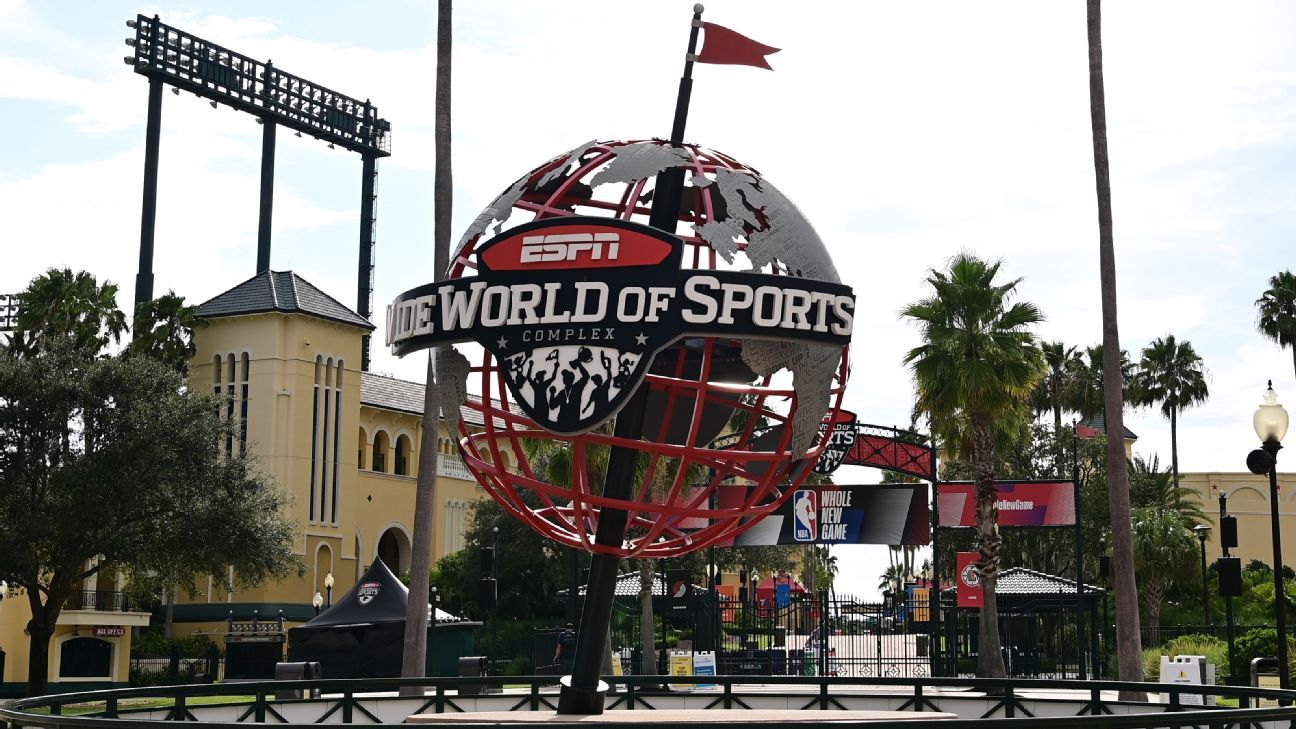
ESPN is planning to move at least eight of its men's college basketball events to the ESPN Wide World of Sports property at Walt Disney World in Orlando, Florida, conference and team sources told ESPN.
ESPN runs 10 nonconference events in November and December, and at least eight of them are expected to take place in Orlando this year. The Champions Classic, Charleston Classic, Myrtle Beach Invitational, NIT Season Tip-Off, Wooden Legacy, Orlando Invitational, Jimmy V Classic and Diamond Head Classic are expected to move to Disney.
The ESPN Wide World of Sports has been the site of the NBA's bubble, but different protocols are expected to be in place for college events, team sources told ESPN.
The events are expected to begin on Nov. 25, the new start date of the 2020-21 college basketball season, and run for the first two weeks of the season. Specific dates for the events are undetermined for now, but the Champions Classic -- which annually takes place on the first night of the season -- is more likely to occur during the second week of the proposed two-week window, team sources told ESPN. There will be events overlapping during those two weeks, with up to three games going on at once.
There is also the potential of "crossover" games, where teams from different events could play against one another outside of their scheduled event or game. One intriguing possibility would include Baylor and Gonzaga, two preseason national championship contenders who agreed in August to face each other in nonconference play this season. Both are scheduled to play in the Jimmy V Classic, but not against each other.
Sources have indicated that no new teams are being recruited to enter the bubble, with ESPN's events expected to include the teams originally scheduled. However, forthcoming issues -- including the scheduling uncertainty in the Pac-12 and Ivy League -- could force event operators to revisit that thinking.
College basketball's nonconference slate is likely to take place in controlled environments across the country in November and December. Las Vegas, Indianapolis and the Mohegan Sun casino in Uncasville, Connecticut, are expected to host a large number of teams and events inside bubbles, sources told ESPN, while the Maui Invitational is moving to Asheville, North Carolina, and the Battle 4 Atlantis is expected to be relocated to South Dakota. Potential nonconference bubbles in Houston and Atlanta have also been proposed, while Louisville, Duke and Kentucky are among the programs organizing their own multiteam events on campus.
Here are the ESPN events expected to move to Orlando:
Champions Classic: Duke, Michigan State, Kansas, Kentucky
Charleston Classic: Charleston, Florida State, Houston, Oklahoma State, Penn State, Seton Hall, Tennessee, VCU
Myrtle Beach Invitational: Charlotte, Dayton, Loyola Chicago, Missouri, Nebraska, Penn, Pitt, Utah State
NIT Season Tip-Off: Arizona, Cincinnati, St. John's, Texas Tech
Wooden Legacy: Georgetown, Kansas, UCLA, Virginia
Orlando Invitational: Auburn, Belmont, Boise State, Gonzaga, Michigan State, Siena, Saint Louis, Xavier
Jimmy V Classic: Gonzaga, Tennessee, Baylor, Rutgers
Diamond Head Classic: Arizona State, Hawaii, North Texas, Oklahoma, San Diego State, Saint Mary's, Seattle, Temple
What it took for Anthony Davis to get to this moment
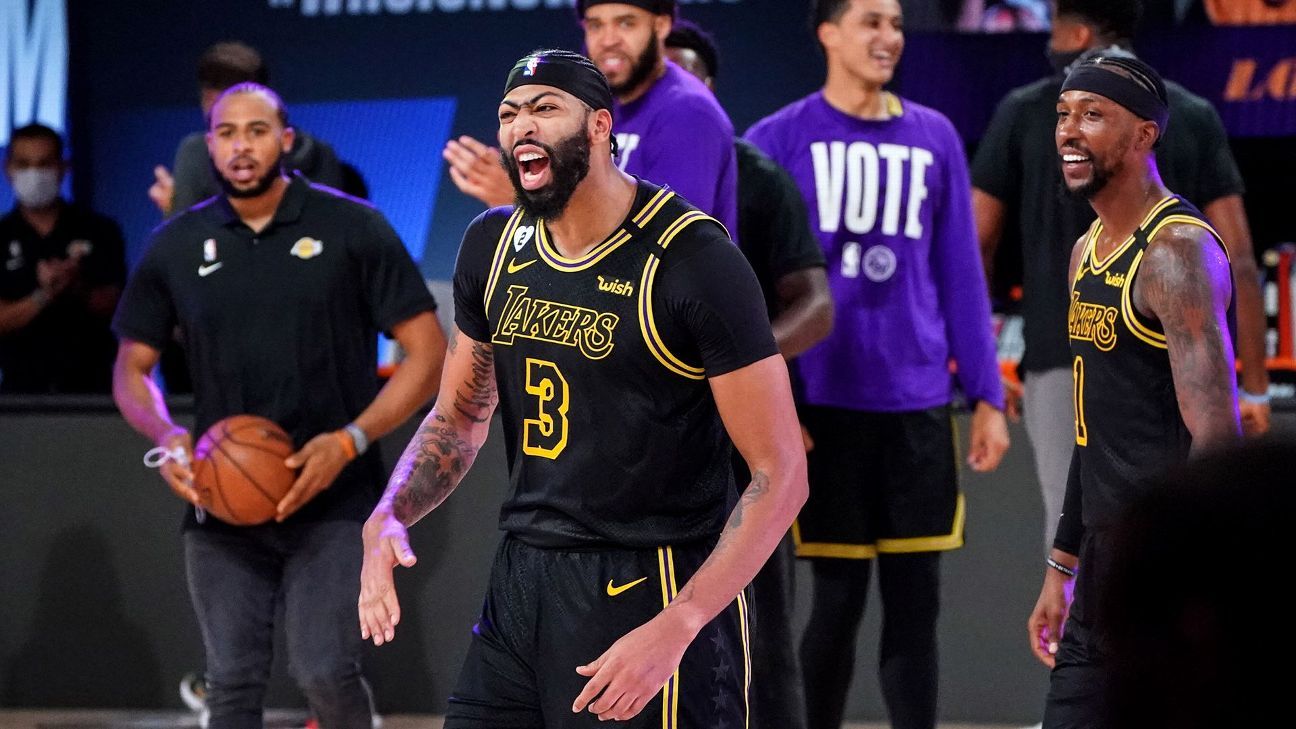
Anthony Davis is used to individual success. The 2012 No. 1 overall pick is a seven-time All-Star and four-time All-NBA player. This season, he finished second in Defensive Player of the Year voting and sixth for MVP, while being named first-team All-NBA and first-team All-Defense.
But the 2020 NBA playoffs in the Orlando, Florida, bubble have given Davis something new: team success. His first Western Conference finals appearance brought his first game-winning postseason buzzer-beater. Now he has his first real chance at a championship.
The Los Angeles Lakers, led by Davis and LeBron James, are just two games away from their first NBA Finals appearance in 10 years. Here's how Davis arrived at this point with an opportunity to cement his legacy.
Living up to the hype
Since the one-and-done era began in 2006, there have only been three consensus No. 1 high school players before entering college. Thanks to Austin Rivers, Anthony Davis was not one of them.
Standing 6-foot-3 as a high school sophomore in 2008, Davis shot up nearly six inches as a junior, taking the recruiting world by storm in the summer of 2010 and earning scholarship offers from the likes of Syracuse, Ohio State, DePaul and eventually Kentucky. Weighing just 187 pounds, Davis' production was hit or miss as he grew into his thin frame. He was utilized as the primary ball handler and distributor on a mediocre Perspectives Charter high school team in Chicago with nowhere near the strength or polish he has now.
But when NBA scouts got their first glimpse of Davis during the high school All-Star circuit in April 2011, he began to cement his No. 1 status for the 2012 NBA draft. In particular, one private scrimmage the day before the McDonald's All American game stood out. Davis' shooting touch, timing as a shot-blocker and feel for the game immediately made an impression. And his mobility was on a different level than his peers'; Davis' long-term potential was clear.
Even though he was incredibly productive and helped Kentucky win the national championship, it was obvious Davis was only scratching the surface on the type of player he could develop into, as he was fifth in usage rate on that Wildcats team. After making only three of his 20 3-point attempts in college, Davis has already converted 84 3s this season and a career best 83.3% of his free throw attempts, a testament to how much his game has grown since he entered the NBA.
While it was always easy to project Davis becoming a perennial candidate for defensive player of the year, few envisioned him running off a screen and nailing a buzzer-beating 3-pointer off movement to win a playoff game like he did against the Denver Nuggets on Sunday night.
Other prospects have been projected to go No. 1 at least a full year before the draft in the one-and-done era -- including Greg Oden, Andrew Wiggins, Markelle Fultz -- but only Davis has backed up the hype that surrounded his rise. -- Jonathan Givony
Jonathan Givony is an NBA draft expert and the founder and co-owner of DraftExpress.com, a private scouting and analytics service utilized by NBA, NCAA and international teams.
Above the forehead, nice and high
The buzzer-beater Davis made Sunday night was the glorious payoff for years of unglamorous shooting work Davis put in early in his career, reinventing his shot mechanics.
Davis made only three total 3-point shots in his first three NBA seasons. But even as a young player, he was acutely aware of where the game was headed and that his ability to shoot from 3-point range would influence his overall value. So he spent hundreds of hours in quiet gyms tweaking his form, ensuring his jumper would become a legitimate NBA weapon.
When Davis entered the league in 2012, his shot release was relatively low on his forehead.
"I was shooting the wrong way; I was more of a push-out shooter, from my chest," he said in 2015. "When you shoot from your chest and in front of your face, you lose sight of the rim."
That didn't matter in AAU games or even at Kentucky; Davis would simply dominate games with his other skills. But the NBA is a different beast, loaded with big men such as Nikola Jokic who will devour lower shot releases.
"I kind of moved it up to the right side of my right ear, above my head," he recalled of his adjustments. "Which helps me see the rim a lot easier."
With the New Orleans Pelicans, Davis worked with assistant coach Kevin Hanson to elevate his release point. The pair recognized that the NBA's best shooting bigs all released the ball over their heads. Dirk Nowitzki, Kevin Garnett and LaMarcus Aldridge leveraged high releases to both clear their vision of the target and to prevent defenders from blocking their shots.
Davis' jumpers are now among the hardest shots to block in the league.
On Davis' Western Conference finals Game 2 buzzer-beater, the 7-foot Jokic came within a few inches of getting a finger on the ball, deflecting it and saving the game for Denver. But Jokic just couldn't reach it. The shot was too high. It started above Davis' forehead and finished nice and high.
This year, opponents have blocked only two of Davis' 592 jump shots. That 592nd one was pretty important. -- Kirk Goldsberry
Team success matching individual success
This is already the deepest playoff run of Davis' NBA career, but that's not because anything has changed about him as a player. After leveraging his way to join James and the Lakers, Davis finally has supporting talent worthy of his own performance.
Back when Davis was first agitating to be traded from New Orleans, I put together a quick metric to investigate the question of how many wins you'd expect from a team with a player of his value (as measured by my wins above replacement metric, WARP). The answer to that question depends from year to year based on Davis' health and his development as a player, but it's typically around 45 to 50 wins. Never once during his seven seasons with the Pelicans did they hit that expectation.
In many ways, this analysis measures how good everything else is around a player in an organization -- his teammates, the coaching, etc. The one time New Orleans came close to average in this regard, the Pelicans swept the favored Portland Trail Blazers out of the playoffs in 2018 before losing to the eventual-champion Golden State Warriors.
Because Davis' talent was so obvious, and the same was true of the dysfunction around him, the losing never stuck to him in the same way as other players in similar situations -- say former James teammate Kevin Love, whose Minnesota Timberwolves teams lost 114 games more than expected based on his value before his trade to the Cleveland Cavaliers.
Still, until Davis could enjoy team success commensurate with everything he had accomplished individually in the NBA, nagging questions about his value were always going to persist. So it's been nice to see Davis finally being put in a situation to succeed and responding exactly as well as we'd expect. -- Kevin Pelton
Titles, not moral victories
The last time Davis was eliminated from the playoffs, he walked slowly to the bench as the clock wound down and dapped coaches and teammates. It was May 8, 2018, and Davis had just dropped 34 points, 19 rebounds, three steals, a block and an assist in the season-ending loss.
There were reasons for optimism within the Pelicans franchise; it was only Davis' second playoff appearance in his sixth NBA season, and the Pelicans had taken the mighty Warriors and their vaunted Hamptons Five lineup to five games in the second round. Davis had matched former league MVP Kevin Durant for most points per game in the series (27.8) and was the only player on either team to average 40-plus minutes.
But after he gave end-of-series hugs to Draymond Green and the other advancing Warriors, it was clear that a second-round breakthrough wasn't enough.
"There's no moral victories," Davis said in the post-series news conference. "There's a lot [of positives] that we could take from this season, but anytime you don't win a championship, I'm not sure how much success you really had."
That September, Davis switched agents and signed with Rich Paul of Klutch Sports. Davis told his teammates before the season began he was thinking of asking for a trade.
By the following January, Davis had formally requested that trade through his agent, with James' Lakers as his top choice. Davis was booed on the road and in his home arena, and he was held out of games as the trade deadline came and went. He did not dress down the stretch as New Orleans' disappointing 2018-19 season ended under a cloud of trade rumors.
For all of the promises to build around Davis, the best the Pelicans could give him was that 2018 second-round exit. So he found a way out.
Just a season after his trade to Los Angeles was granted, Davis has reached his first conference finals and is two games away from his first NBA Finals. This is why he endured the heckling, why he pushed to join James: Title contention is what the Lakers represented. -- Andrew Lopez
Perkins: 'No chance in hell' Nuggets come back
Kendrick Perkins asserts that there's no way the Nuggets will come back and win the series against the Lakers, adding that Denver might even get swept.
Harmony leading to victory
When the Lakers traded for Davis last summer, it at least slightly reminded some of the last time they'd acquired a future Hall of Fame big man in the final year of his contract. That hadn't gone so well.
In 2012, Dwight Howard never bonded with then-team standard-bearer Kobe Bryant, and Howard left for the Houston Rockets after one season. With Davis, that doesn't look to be at all the case. While Davis can -- and likely will -- opt out of the final year of his contract after the season to become a free agent, he has bonded so well with James and the team that his contract situation is rarely mentioned.
James has been nurturing the relationship with Davis -- the big man has openly acknowledged leaning on the elder James for guidance as they advance deeper into the playoffs -- because in many ways, their futures are tied together.
If Davis leaves as a free agent, James' final years in L.A. would be greatly diminished. But so far, they've built a bond, on and off the court.
In the locker room, that bond has been on full display. The Lakers' locker room was a crowded place every night this season when media members were granted access. James and Davis would always manage to communicate with each other through the crowd.
They'd shoot each other knowing glances as they eavesdropped on each other's interviews. When there was room to speak directly, they'd hold a hand over their mouth and whisper. Other times, James would make funny faces or sing loudly, trying to make Davis laugh as he answered questions.
In a way, they were trying to conceal the substance of their relationship with all the jocularity. But in another way, they were very publicly confirming just how close they'd grown.
That might not seem like a big deal, but rarely do two superstars find such an easy friendship so quickly, without egos bumping into each other. This is particularly true for James, who has not always gotten on so well with star teammates.
There's no drama around whose team it is. There's no intrigue around whether Davis feels like James' star power diminishes his own. There have been few contract whispers over the course of the season.
To appreciate how rare this type of superstar relationship is, one need only look a few lockers down. Howard has returned to the Lakers at age 34, willing to do anything to chase a ring alongside Davis and James. -- Ramona Shelburne
Investing in a legacy
When Davis arrived in Los Angeles, he left $4 million behind. That's the baked-in insurance should certain max-level players be traded, commonly referred to as a "trade kicker." And though sometimes a player must waive his bonus to facilitate a transaction (Kyrie Irving relinquished his $5.8 million kicker to allow the move to the Boston Celtics in 2017), Davis was under no obligation to forgo the extra money when he left New Orleans.
"I'm all about legacy," Davis said in February 2019. "The money comes and goes. When I get done playing or leave this earth, what is my legacy going to be?"
To be fair, Davis had motivation to pass up the money. His trade to L.A. came a few weeks before the start of free agency, and eliminating his kicker -- combined with tearing the roster foundation to just James and Kyle Kuzma -- freed up enough cap space for the Lakers to pursue Kawhi Leonard.
Even without Leonard this season, waiving that $4 million helped Davis take steps toward building a greater legacy with this team; it gave him equity in the roster.
Lakers vice president of basketball operations and general manager Rob Pelinka consulted the All-Star big man on every subsequent move the team made. And months into the season, Davis told me that he had no second thoughts about the decision, believing that it served its purpose in making the team better.
When Davis gave up the money, he ended up investing in his partnership with the Lakers -- and it's already paying dividends. -- Dave McMenamin
NHL bubble confidential: Go inside the Toronto and Edmonton playoff hubs
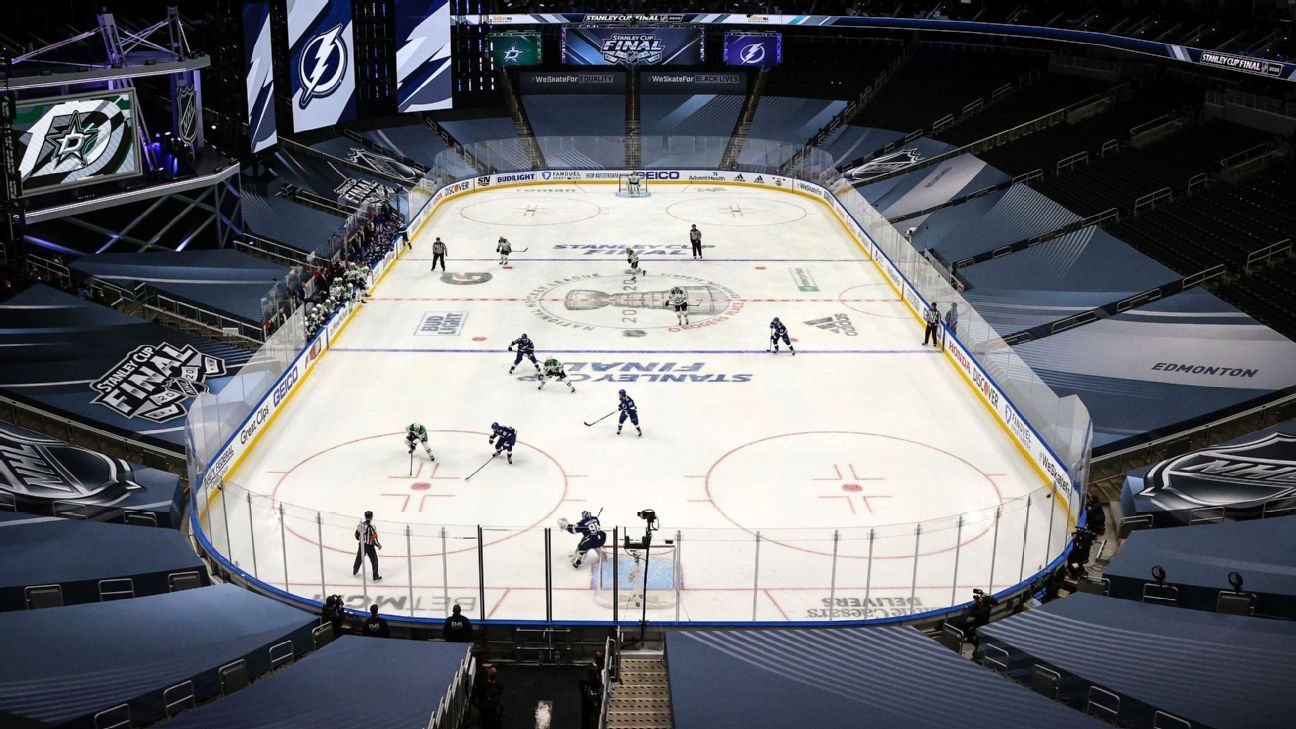
For nearly two months, the National Hockey League has kept the teams in its postseason tournament inside "bubbles" that it helped construct with the NHL Players' Association in an effort to safely finish the 2019-20 season after it was paused because of the COVID-19 pandemic.
Initially there were two: The 12 teams from the Eastern Conference were housed in Toronto, with two hotels in proximity to Scotiabank Arena, and the 12 teams from the Western Conference were in Edmonton, Alberta, with two hotels near Rogers Place. For the conference finals and Stanley Cup Final, all teams were in Edmonton.
Life for the players inside these bubbles has been a mystery. We know they're tested for COVID-19 each day, and through eight weeks and 32,374 tests, there has yet to be a confirmed positive case. We know there are some amenities for them to use away from the rink. But with no independent media in the bubble -- and with candid comments about the emotional strain of this experiment far too infrequent -- many of us don't have a sense of how players have handled this unprecedented experience -- until now, that is.
"We love playing this sport, and I don't think there is one guy who wasn't appreciative for the chance to win the Cup this summer," one Western Conference player said. "But also, I don't think a lot of fans realize what an emotional toll the bubble took on some guys -- the isolation, the grind, being away from our families and loved ones during a really stressful time to begin with. To be honest, after the first few days, I noticed a lot of guys were more down than they usually are. Some guys were legitimately sad. It's not easy living like that for two months."
ESPN debriefed with nine players -- five from the Western Conference and four from the Eastern Conference -- who, on the condition of anonymity, answered dozens of questions about what life was really like inside the bubble, from playing in empty buildings to being trapped in hotels to food, drinking and drugs.
It's the NHL bubble confidential.
Jump ahead:
'I almost felt too secure' | 'Not as advertised'
'Please let me know if you talk to anyone who went fly fishing'
Sex and drugs | 'I ate a lot of room service' | Proximity to the enemy
The game experience | A bubble for next season too?
'I almost felt too secure'
There's one thing players unequivocally say about their experience in the bubble: They felt safe.
"Security was very tight," one Western Conference player said. "For all the guys that were questioning how safe it would be, that quickly went away. It was one of the safest places you could be. They were constantly checking your credentials, constantly checking our Clear App, constant security. In that sense, they did a really good job."
One Eastern Conference player said the testing made him feel "at ease," which was reinforced by "mask police everywhere" inside the bubble.
Another Eastern Conference veteran said mask culture, which was prevalent, was about "internal respect" as well as "optics."
"When you're at the rink, they're taking pictures of you walking in and walking around. If you're walking around with no mask on, that's not sending the right vibe," the player said. "Yeah, it was annoying. But we're still representing kids that are watching it. All a kid has to say is, 'Hey, Auston Matthews isn't wearing a mask to the rink, so I don't have to.'"
The uniform praise of the bubbles' safety seems warranted, given the results for the NHL and the NHLPA. "I mean, there are zero cases, and that is so impressive, considering everything going on and all the moving parts," an Eastern Conference veteran said. "You can complain about everything else, but the NHL should be really proud of themselves for that last that part."
That sense of safety did come with a cost in the eyes of a few players. One Western Conference player recalled arriving in the Edmonton bubble and immediately feeling claustrophobic.
"The fence that boxed us in, that made you feel like you were in more of a prison, kind of like an animal," he said. "Just the feeling of it. There's no other way to separate you from the outside world in a safe way, but it was an eye-opener when guys pulled up to the hotel."
An Eastern Conference veteran called it "a safe zone, totally separate from the outside world" in Toronto. "I almost felt too secure. With the fences they put up, there was no way anyone was getting in or out," he said.
In other words, the pre-bubble speculation regarding "prison breaks" by players seeking some fun outside the bubble were greatly exaggerated.
The fact that Gary Bettman is going to award the Cup to Dallas or Tampa Bay by the end of the month is chalked up as a win.
"If the goal was to finish the season and award the Stanley Cup -- which it was -- then yes, it was a success in that sense," a Western Conference veteran said. "Accommodations and fun? Not even close. But again, that wasn't the goal of the whole thing."
'Not as advertised'
Many players thought the NHL exaggerated about the comforts of life in the bubble -- "Frankly, to get us all to agree to come out," an Eastern Conference player said. As one Western Conference player put it: "I would quote it as 'not as advertised.'"
"Once you got into the pattern of playing every other day, the amenities were less important," another Western Conference player said. "But they oversold what was delivered."
The NHL sold the bubble to the players with what amounted to a vacation packet you'd get from a resort, full of pictures and maps.
"The things promised and actually delivered [on] are hilarious if you look at it," said one Eastern Conference veteran who was a member of the return-to-play/CBA committee. "They gave us a proposal for Toronto, which was this booklet that I circulated among my teammates. I was like, 'Whoa, this is going to be actually nice.' They had food trucks, restaurants, shops out in the middle of the street for us to go shopping. When we got there, the guys were like, 'Where are the shops? Where are the outdoor team lounges?' Yeah, none of that."
A Western Conference veteran was dazzled by "all these restaurants to eat at, all these food trucks, all these excursions, families were going to be there." But after weeks in the bubble, "it just felt, to a lot of players, that they made all these promises to get us there and didn't really want to follow through with them and made it as hard as they possibly could to do these things. It's just annoying. That's what it is."
This led to gossip among the players in the bubble that some teams were getting benefits that others weren't. One Eastern Conference veteran said there was jealousy about which teams had access to roof decks and which teams had the better spreads of food. "Some teams like Florida really didn't have much in the way of this or that [in the bubble]. But Montreal, in their little practice area, had wraps and smoothies and everything, ready to rock and roll. That's a team that's got deep pockets," he said.
In Toronto, players were generally happy with the setup, especially those staying at Hotel X, where there were plenty of perks, including a rooftop pool. BMO Field, where Toronto FC plays, was included in the bubble, and players could go there to kick around a ball, grab lunch or catch a hockey game on a big screen.
In Edmonton, logistics weren't as ideal.
"There were times I didn't go outside for four, five days," said a Western Conference player who spent weeks in the bubble. "Some teams had meeting rooms with balconies, and those guys could go out there and get some sun. Other teams' rooms were in the middle of the hotel. So there's no windows, no light. You're always in your room. And unless you go out to the prison yard -- which is in a 'courtyard,' but it was an oval concrete slab with a freaking Tim Horton's truck in it and fencing around it -- you don't get any fresh air at all."
Many players noted that they got irrationally excited to go on bus rides to the practice rinks. "Just to be able to look out the window and see the city, some sky, actual civilization," one Western Conference player said. "I got amped up for a bus ride. How sad is that?"
In Edmonton, though the JW Marriott was nicer -- and housed the higher seeds -- the fact that it was connected to the arena via a tunnel was not ideal.
"When we switched hotels from Sutton Place to the JW, it was crazy that you might not see the sun at all," a Western Conference player said. "You walk inside from your meal room right into the rink. Then you get to the end of your second day, and it was like, 'I haven't been outside, seen the sun or breathed fresh air in 48 hours.'"
The bait and switch: 'Please let me know if you talk to anyone who went fly fishing'
Golf excursions were a big selling point during planning for the bubble. However, very few teams were able to take advantage. The Tampa Bay Lightning, for example, had one golf outing during their two-month stay.
"Even playing golf was a hassle," one Western Conference player said. "You have to set up a golf time. It has to be an exact time, but it has to be everybody or nobody. Realistically, what team is going to set up a full-team golf outing between Games 3 and 4 in the second round?"
It wasn't just the lack of golf trips that irked players. "They promised us excursions: 'Oh, we're going to have fly fishing and golf, a golf course just for us -- you can go whenever you want -- and a field,'" a Western Conference player said. "We went to the field one time. It was a fight to even golf once. And please let me know if you talk to anyone who went fly fishing."
In fact, fly fishing became a punchline.
"In the little brochure they sent, there was a picture of a man fly fishing in the mountains, and one of the guys was like, 'Where did they get this picture of the mountains? The mountains are three hours away,'" a Western Conference player said.
One of the biggest "moving the goalposts" gripes from the players was about the matter of families joining the bubble. The NHLPA and NHL agreed that families could join by the conference finals but later said they couldn't get government exemptions, which prevented any non-Canadian families not living in Canada from coming to the bubble without doing a 14-day quarantine.
"I think they just didn't want to risk the bubble being broken by a random person being brought in and risking it," one veteran player said. "But it felt like they promised that and then pulled it away."
"Even if they did get the government sign-off, they were making it so difficult for everyone," a Western Conference player said. "Let's say a family has two kids, 2 and 4, and you're going to make them sit in a hotel room for four days and only have room service? And on top of that, you need to either drive to Edmonton or fly private for, like, $50,000? It was very unrealistic. There were other ways they could have done it. They could have taken control over the situation, but frankly, they didn't because they didn't want the families there."
The NHL's approach to families in the bubble was in stark contrast to that of the NBA in its Orlando, Florida, bubble.
"I saw the NBA had school provided for players' kids, and I was like, 'Are you kidding me? Why didn't someone think of this?'" one player said. "We should have offered that, too."
One player earning less than $1 million said he couldn't afford for his girlfriend to fly private, which would have lessened her quarantine restrictions, so she was planning to fly to Montana and drive the seven-and-a-half hours to the border. Another player became frustrated when, weeks into his stay in the bubble, he was given a questionnaire asking how many of his family members were planning to attend. "And we were like, 'I thought this was all figured out already. What do you mean we have limited available rooms?'" the veteran Eastern Conference player said. "You told us families are allowed to come. I don't know why you're asking only now for all this information. That should have been done a long time ago so people could make plans."
One Western Conference player said there were a lot of phone calls made to the NHLPA in an effort to figure out what was happening, "but answers were really hard to come by."
Ultimately, the players thought transparency was at the root of the issue.
"I just wish they communicated better," an Eastern Conference player said. "In light of everything, that's all we ask for: the proper information. We're coming here. We all know full well it's not what we're used to. Just tell us and tell us why. But I think a lot of times we were left in the dark, and it gets frustrating for a lot of guys."
Sex and drugs
As for recreational activities? "It wasn't a bubble spring break, if that's what anyone is implying," a Western Conference veteran said.
Players had access to a concierge service in the lobby, and they could order beer and wine and have it delivered to the team rec rooms. Hotel X in Toronto featured SkyBar, which is where players from several teams converged on a nightly basis.
"I'm not kidding you when I say that at least 10-15 guys from every team were up there," one Eastern Conference player said. "If a team was playing the next day, you didn't see any of those guys at the SkyBar. It would be teams playing the following day or after their games. It wasn't just the fourth-line guys or just the top-end players. The stars, the young guys, everybody was there."
Social media might have warped perceptions of partying in the bubble. A few photos of Washington Capitals players drinking outdoors fueled speculation that they were "having pool parties and turning it into a vacation" before they were eliminated in the first round, according to one report. But an Eastern Conference player said every team took it easy now and again.
"I think there were some misconceptions because some of the younger guys from teams were advertising it on their Instagrams," he said. "If any team has two days off in between games, I don't care who you are, that team is going to get together -- especially because, as players, you haven't been around each other for three months. Are you going to tell a 34-year-old guy that he can't have some drinks after the game or go lay by the pool?"
Added a Western Conference player: "The farther you went in the playoffs, the more serious it got. During training camp and play-in games, there was more drinking. Things definitely toned down as we went along."
On the drug front, the items of choice were cannabis gummies. "The only thing that you really saw advertised was guys that were into their gummies or edibles. And that was usually just used in their rooms," one Eastern Conference player said.
As with drinking, things seemed to be in moderation in the bubble. "Weed gummies were there, drinking was there, but I think when it came down to it, people were trying to perform the best they can," a Western Conference veteran said. "I don't think guys were drinking to party -- certainly not in excess. When guys were taking weed gummies, it wasn't a 'Let's get high as s--- and do nothing all day.' It was more of a recovery sense or to fall asleep after a game. Instead of falling asleep at 4 or 5 a.m., guys could fall asleep at 1 a.m. so they could get seven hours of sleep."
One thing that was very much not in excess in the bubble, if it existed at all: sex.
"There was some chatter before it started about guys trying to leave the bubble or sneaking girls in. There was none of that going on. Guys were pretty mature. Ultimately, you didn't want to be the guy that f---s this up, to be the one that ends up getting everyone COVID," one Eastern Conference veteran said. "Everybody is getting tested every day. So I think guys were almost too scared that something might happen, and then they get caught. Everyone knew what floors every team was on. If someone was going to a certain floor, it was pretty easy to figure out what team they were associating themselves with."
The player said "there wasn't much room for shenanigans" and cited the now-infamous story of the Seattle Seahawks player who tried to sneak a girl through quarantine protocols by dressing her as a player. "I don't think hockey players are going to have that happen," he said.
'I ate a lot of room service'
When it comes to food in the bubble, the consensus among players we talked to was this: Although the options were limited, the quality was good. "I thought food was going to be an issue going into it," a Western Conference player said. "But I felt like the hotel chefs did a really good job working out menus."
Many players pointed out that the pre-planning brochures overpromised again. "The original pitch showed there was going to be 12 to 15 dining options," one Western Conference player said. "In reality, there were maybe five or six realistic ones. That's a pretty big difference. I ate a lot of room service. The room service quality was decent, but the options seemed limited."
Added an Eastern Conference veteran: "It wasn't that the food was bad. It was just the same meals over and over and over. I know we're creatures of habit, but at some point, I just couldn't do it anymore. Like, they were told hockey players like steak, but at one point, I was like, 'Holy s---, this might be my fifth steak this week.' That's insane. I don't do that ever."
The monotony left some players ordering out for meals, which were delivered to the shared common area for pickup. "I think it would have helped it just be a healthier environment, too. Some guys, their eating habits went down because they were getting Uber Eats all the time, and who knows what they were actually ordering," an Eastern Conference player said.
Throughout the tournament, many players observed that it wasn't an even playing field for teams as far as amenities. "I think some other teams had different setups, and I'd be a little disappointed in [team redacted] if that's the case because that should have been thought of," one Eastern Conference veteran said. "If there was a place for us to always have meals available, a majority of the guys would have taken advantage of it, just to be around each other. It's not going to kill you."
Players took notice of this culinary imbalance between teams.
"Some teams have owners that are in the restaurant or hotel business ... this was just a chance to make a couple bucks back," an Eastern Conference player said. "But when you're feeding 30-50 6-foot-plus monsters and you've got 50 hotel rooms, it wasn't a cheap restart, right? But it was also a situation where you're like, 'I can't believe Philly got this. We should have that.'"
One player griped that not all meals were taken care of, and per diem was not offered.
"I don't mind getting the odd meal, but they should have provided an area where you were provided a meal no matter what," an Eastern Conference veteran said. "As much as I know we're getting paid, it's expensive, especially in Canada. It really added up for a lot of guys. I'm in a different place than a lot of our players, but for our younger guys that are just starting out in their careers, that can get away from you quickly."
One last shock for players: hotel bills at checkout.
"Guys checked out, and their room service bills were in the thousands. Thousands," an Eastern Conference player said. "It was just ridiculous. It's like you go to a resort and you swipe this card, and then you see your bill at the end, and you're like, 'What the f---?' Some guys were really burned by that. So that was something I wish the NHL or teams would have thought of more. I wish meals would have been available."
Proximity to the enemy
Although the NHL can feel small and friendly, the dynamics shifted with everyone jammed in one enclosed space. With one restaurant, one gym and plenty of shared elevator time, there were some awkward interactions.
"If something happened in a game and you see the guy in the hotel, you're like, 'F--- off, buddy,'" an Eastern Conference veteran said. "Now, you're not going to say anything in the elevator, but you both know. But whether you were a fourth-line plug or you're running the power play, you were there trying to play hockey and finish this. You were trying to make it as legitimate as you could. So while there was [tension], there was also a sense of, 'Hey, guys, let's make the best of it.'"
Added an Eastern Conference player: "It was hard because during a playoff series, I want to rip these guy's f---ing heads off on the ice. I don't want to have to mingle with them the next day. So that created some interesting moments. Lots of averted eye contact, to be honest."
In fact, of all the unprecedented weirdness of bubble life, one Eastern Conference veteran said that the awkward cohabitation with rival teams in the same hotel was by far the weirdest part.
"The weird thing was just seeing guys on other teams. Even if they had a couple of hotels where they limited it, it was just weird. Even if you saw a buddy on another team that you're friends with, it's like, 'Do I say hi to him? Do I not say hi to him?'" he said. "And sometimes you'd be eating, and, like, the coaches from the other team are one table over from you having a meal. It's just too weird, you know? That might be different in other sports, but it's weird for hockey."
The game experience
On television, the NHL restart has been aesthetically effective. Large tarps cover seats where fans normally sit. Artificial crowd noise frequently tricks viewers into thinking it's a playoff game in front of a crowd.
Competing in these empty arenas was an adjustment for the players.
"For a guy that's been fortunate enough to play in some pretty crazy atmospheres, it was very, very, very different," an Eastern Conference veteran said. "I don't think you can compare it to the playoffs in any way. It just had a minor hockey feel to it. I think everyone understood that was the only way we were going to be able to play hockey. Like, this is how it had to be."
Publicly, few teams have mentioned the lack of fans as a factor in their postseason demise. The Vegas Golden Knights, for example, talked about the lack of a distinct home-ice advantage in the bubble. Privately, they say it was hard to motivate without fans.
"I know most guys won't admit it, but I feel like our team, personally, had a tough time getting up for the first round-robin game," one Eastern Conference player said. "It was hard to get guys going. You can't just snap into a playoff mentality after not playing for five months, and the first game playing in an empty arena just felt spooky."
"Quiet would be the first word I'd use," said a Western Conference player who was in his first playoffs. "The emotional swings were mostly provided by the team -- a big hit or a blocked shot or a goal. You had to not only get the emotion and the momentum, but you had to keep it on your bench and in your room for it to stay there. You don't have the buzz of the fans and the rink to help control the momentum for you."
One Western Conference veteran who has played in multiple long playoff runs said although there was an initial shock about playing in an empty arena, it wore off quickly.
"When you're in a playoff game, there's a palpable energy to the building. You feel it as soon as you come out," the player said. "That aspect was missing. But once the games start and you get going, the competitiveness takes over, and I didn't really notice [the lack of] fans."
Although ambient crowd noise has been a seamless integration on the TV broadcast -- thanks, in part, to a five-second delay -- it's a bit more disjointed at the arena.
"The sound felt a little off to me," a Western Conference player said. "It was a shot from the boards outside the top of the circle, and it was like, 'Waahahahhh!' and I was like, 'What? Why did they play that then?"
Players said it wasn't distracting as much as it was amusing.
"It's actually funny. I could hear the ambient crowd noise. It wasn't very loud, but I could hear it," said one veteran who played in the Western Conference bubble. "But then I took a penalty and heard no noise at all, and it was, like, silent. It was really weird. I don't know if they just pumped it over the ice surface or what it was."
"They pumped in a little bit of the fan whispers up top, which was interesting," a Western Conference forward said. "The first couple games in the play-in round, I didn't even notice the pumped-in crowd noise. I don't know if they turned it up or not."
As for the quality of play? Here's how an Eastern Conference veteran described it: "The hockey was hockey. It's not like it was dramatically slower. It was nice that teams were able to get at least one exhibition game in. I don't know if you want to say if it was 'playoff hockey,' but it was good."
Said a Western Conference player: "There was definitely chatter of what teams wanted to be there and what teams wanted to be home. Ultimately, I think everyone realizes, whoever ends up winning the Cup this summer is a very deserving champion. We're going to remember that team forever. The grind this year makes it perhaps even harder to win."
What about a bubble for next season?
No one is sure yet what the 2020-21 NHL regular season is going to look like -- not the players, not the teams, not even the league. There are schedule considerations and financial modeling that looks at all situations, from a full season to a partial season, from full travel to limited travel. There are teams wondering if bubble life could make its return in 2020-21, especially at the start of the season, with fans returning to arenas later.
Another bubble would require the players to sign off on it again. Would they?
"No chance for a full season. Probably not for the playoffs," a Western Conference player said. "I think if we can play a full season with no bubble, as far as fly in, empty arena play and fly out, and that's safe, then there's no reason we would have to do a bubble for the playoffs either."
Another Western Conference player said he'd return to the bubble "if I absolutely had to do it again," but he warned that his NHLPA brethren wouldn't be quick to accept it. "If they wanted to do this again, there would be huge pushback from players. Huge pushback. I think everyone understood the situation this time, with the lack of runway up to this and how frantic everything was trying to plan it. But now, with the time that we have to figure out a different avenue, there would be much more pushback if they tried to do this again."
A few players indicated that they would consider it only for the postseason. "I would do it again in the same context -- for playoffs only," one said. "I would never do it again if they were talking about it for the season. The Stanley Cup is the ultimate prize, so if somebody told me, 'The only way you're going to win is if you go back in the bubble ...' then yeah, I'd do it. Because I don't know how many years I have left, you have to squeeze every chance."
If the bubbles return, they will have to be tweaked, one Western Conference player said. "Obviously, assuming we could make a few tweaks, I would do it again for the playoffs. For the whole season, I think it would be challenging. The big thing for me would be having my family there -- or your spouse/girlfriend/whoever."
One Eastern Conference veteran was emphatic in saying that the players wouldn't return to bubble life again. "No. No way. There's just no way. I just can't see that happening for anybody. To do it for the time that we had, for sure. We understood what had to be done. Guys were understanding of it. But even a guy like Tuukka [Rask], it took a lot for him to do that. Whatever his reasoning was, whatever the case may be, that goes to show right there that to do it for even a month, let alone a few, is really rough," he said.
But even this "never bubbler" said as a last resort ... well, he'd have to consider it.
"If the bubble is the only way ... you have guys on some teams that haven't played hockey in almost seven months," he said. "To go a full calendar year, guys are going to start going nuts. It might come to a point where they're like, 'Screw it. Let's just do this bubble thing.'"
In other words, players just want to get back on the ice, which was the driving motivation for the NHL and the NHLPA in creating the Toronto and Edmonton bubbles. The past two months have been proof of concept. They know what worked. They're learning what didn't. If they have to construct more bubbles to return to the ice next season, the players are optimistic that they can work with the NHL to build a better bubble.
"I think knowing what we know now, we could rectify a lot of things," an Eastern Conference veteran said. "So I actually think I'd go back, as crazy as it sounds."
Sources: Suarez furious as Barca backtrack on exit
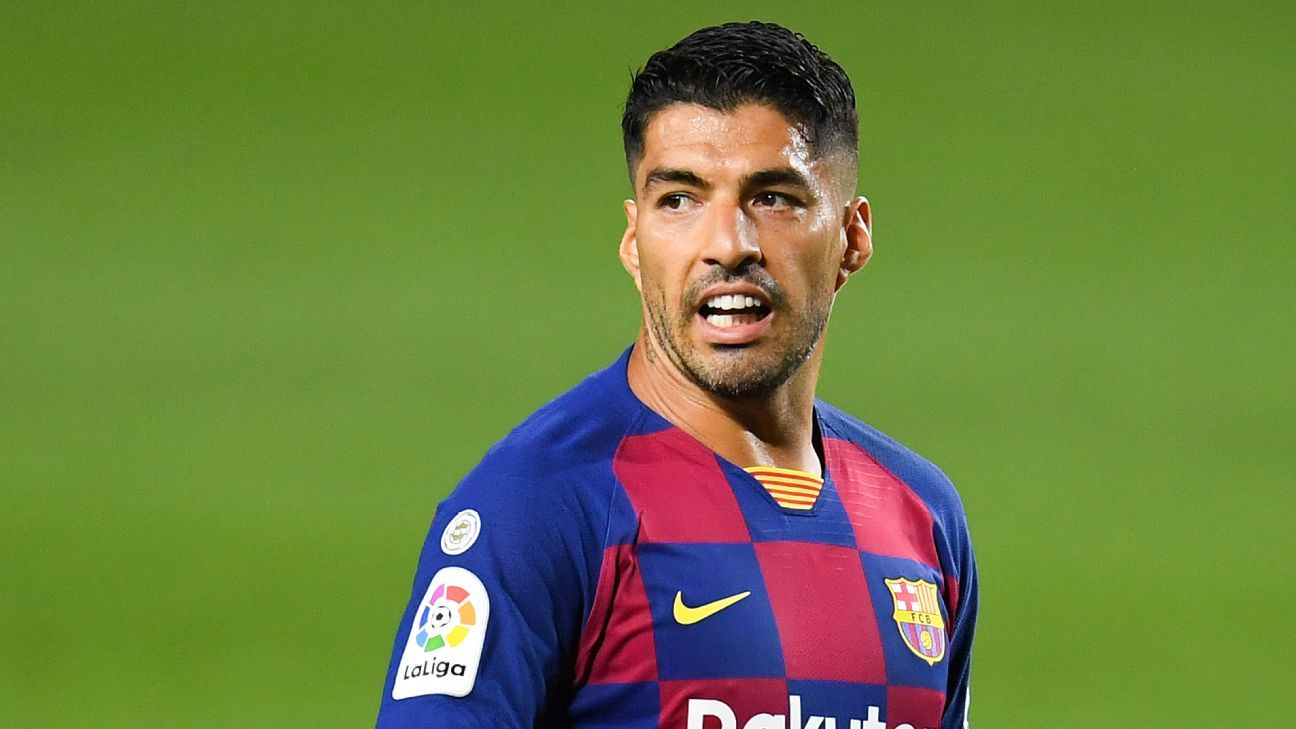
Luis Suarez is furious with Barcelona after the club backtracked on an agreement to let him leave for free when it emerged he was close to signing for Atletico Madrid, sources have told ESPN.
Suarez is now considering holding a news conference alongside his lawyers if the situation cannot be resolved to give his version of events. He believes a verbal agreement reached with Barca this week to terminate his contract should be honoured.
- Stream ESPN FC Daily on ESPN+ (U.S. only)
- Lowe: Messi gearing up for "Last Dance" with Barca
After being told he could leave the club by new coach Ronald Koeman last month, the striker's legal team had been negotiating the recision of their client's deal with Barca.
A breakthrough eventually came on Monday. Suarez would give up a percentage of the money owed to him in the final year of his contract and Barca would let him leave for free, as long as he didn't join certain clubs. Real Madrid, Manchester United, Manchester City and Paris Saint-Germain were among those named in the agreement, but not Atletico.
Meanwhile, sources told ESPN that Atletico had reached an agreement with Suarez on Monday and hoped to finalise the transfer as soon as Alvaro Morata's loan move to Juventus was confirmed.
However, sources told ESPN that news of Suarez's pending move to the Wanda Metropolitano saw Barca put the brakes on the termination of the Uruguay international's contract.
Barca do not want to strengthen a direct rival for the title, especially for free and while still paying part of his salary until next June. The decision to allow David Villa to leave for Atletico in 2013 came back to haunt them when the Rojiblancos won the league and knocked Barca out of the Champions League en route to the final.
Suarez remains hopeful of joining Atleti as he would like to stay in Spain and is looking forward to working under Diego Simeone, who has been the driving force behind Atleti's pursuit of the forward.
Sources have told ESPN that Suarez doesn't understand Barca's stance, given an agreement had been reached and they've made it quite clear he is not part of Koeman's plans this season.
He has not featured in any of the club's three preseason friendlies as he was pushed out the exit door. He turned down the chance to move to Inter Miami and become Major League Soccer's highest-ever paid player, while a move to Juventus failed to materialise because of delays in obtaining Italian citizenship.



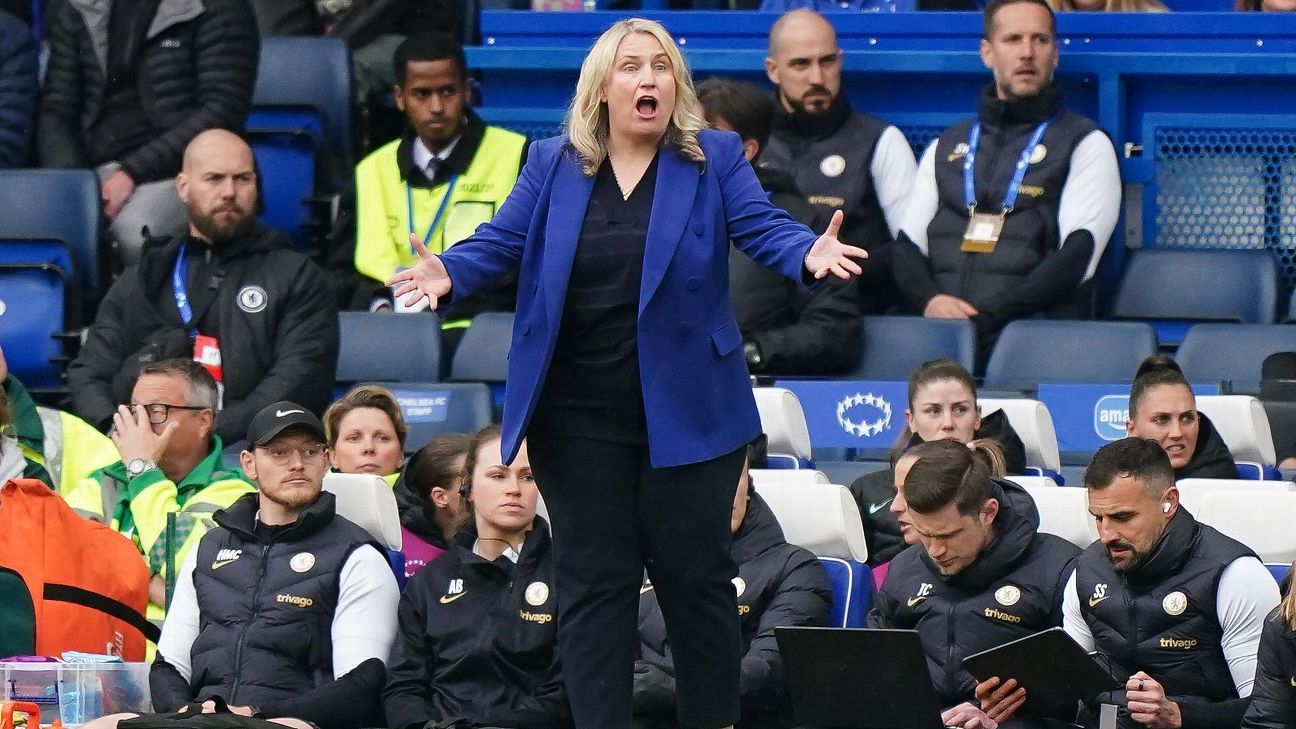






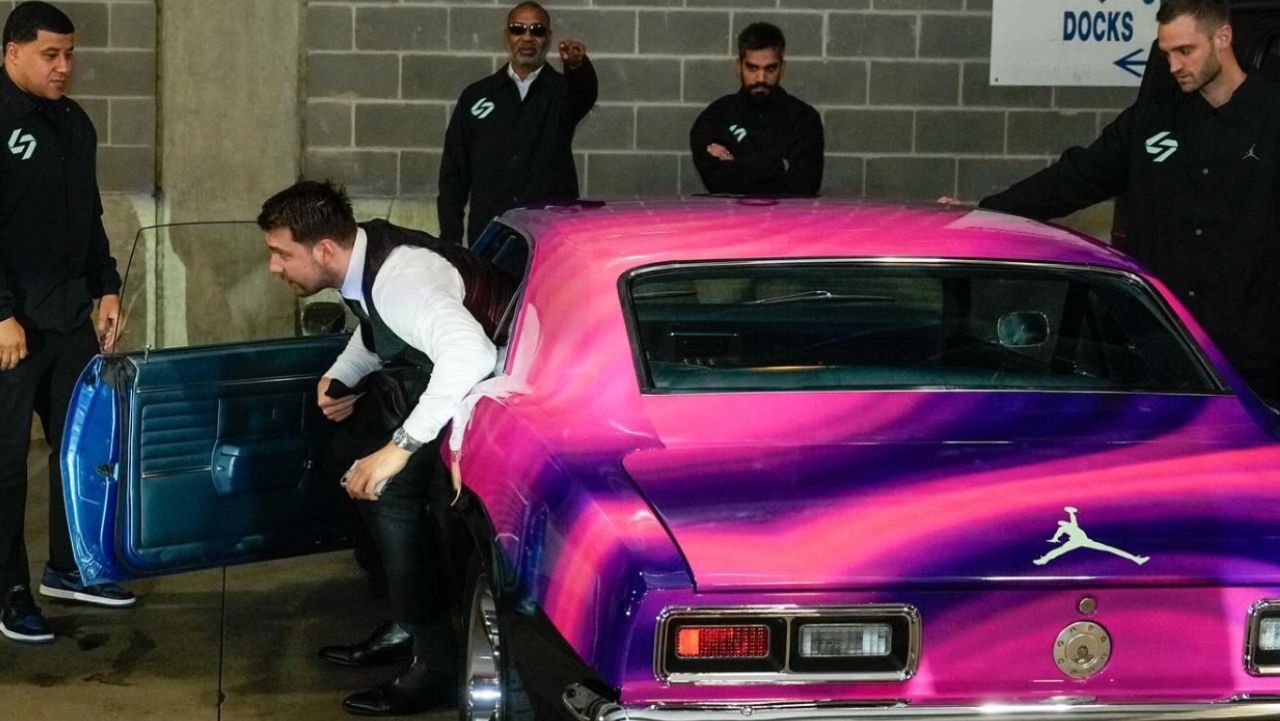
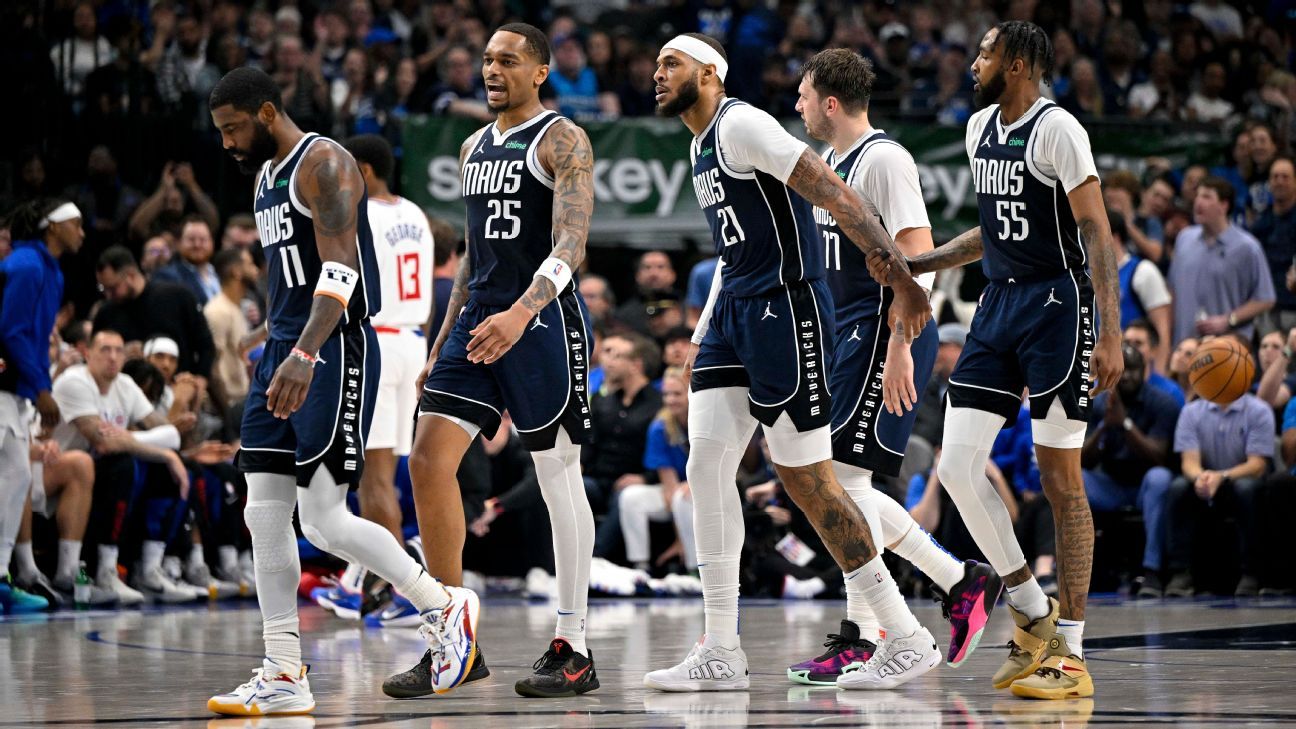
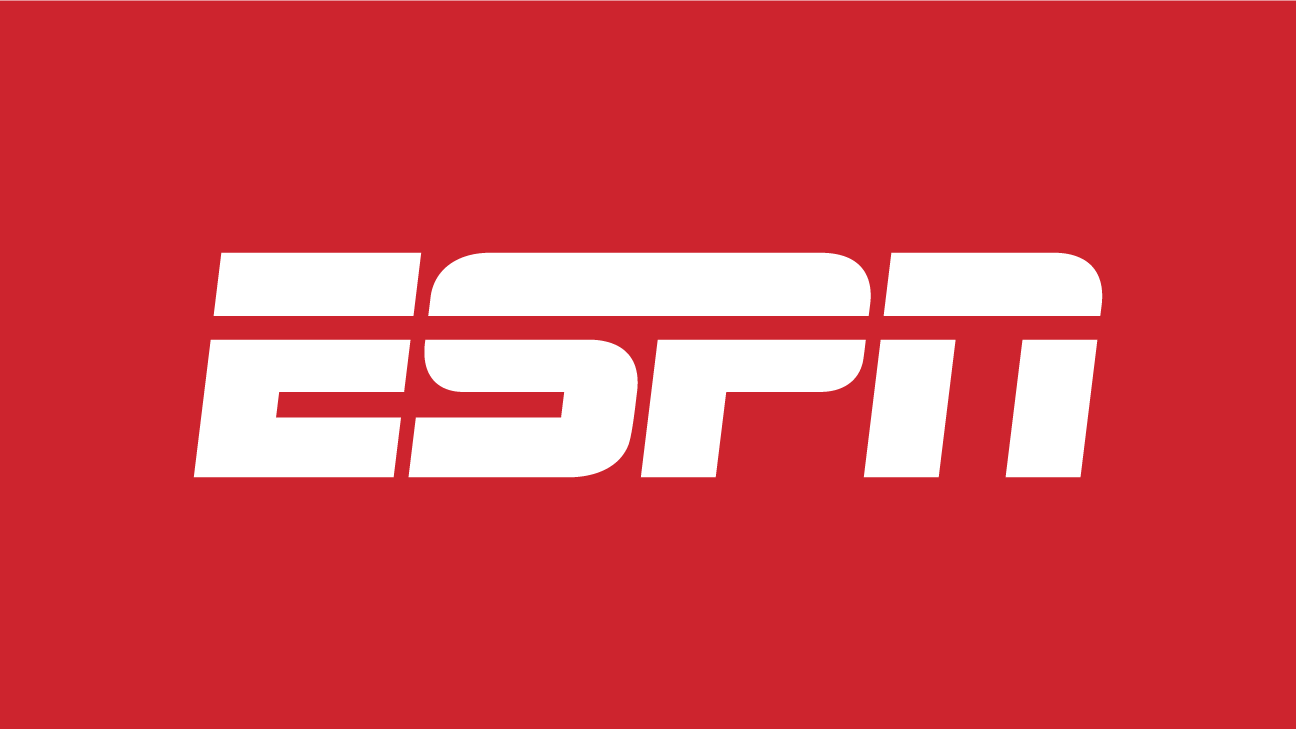
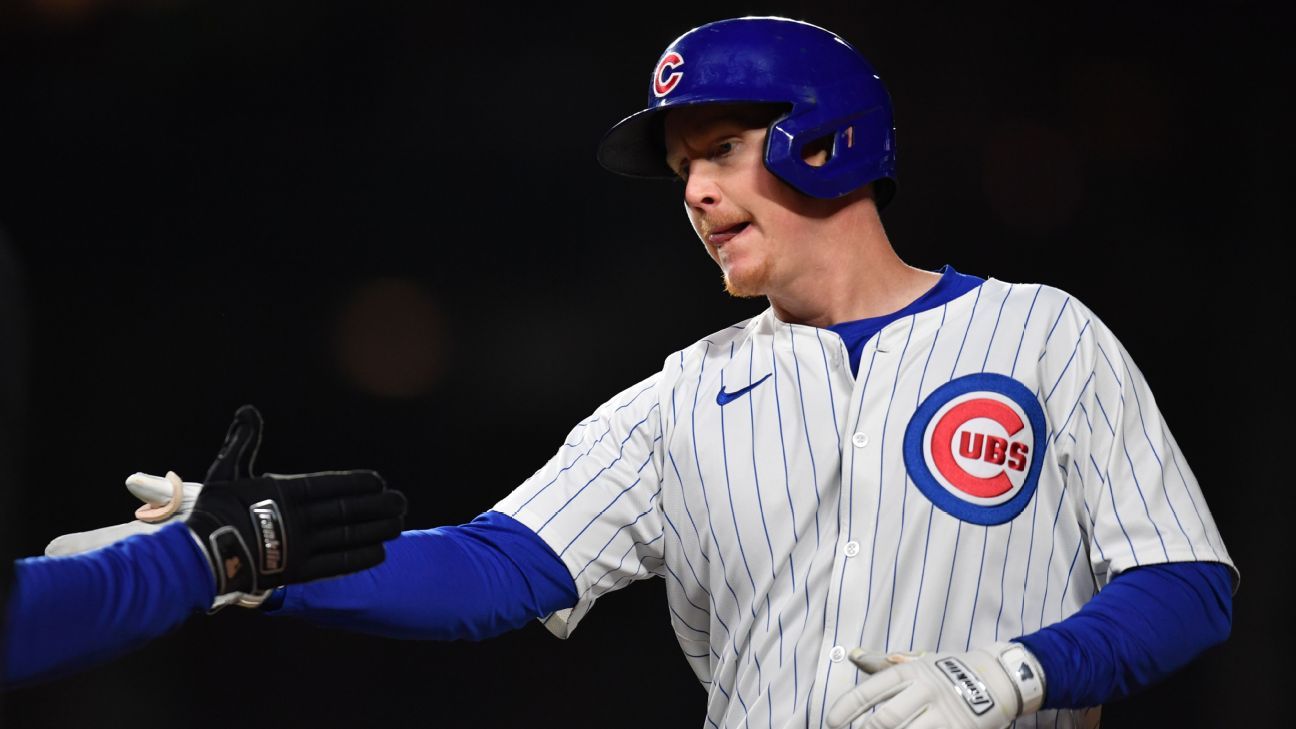

 Phone: (800) 737. 6040
Phone: (800) 737. 6040 Fax: (800) 825 5558
Fax: (800) 825 5558 Website:
Website:  Email:
Email: 






